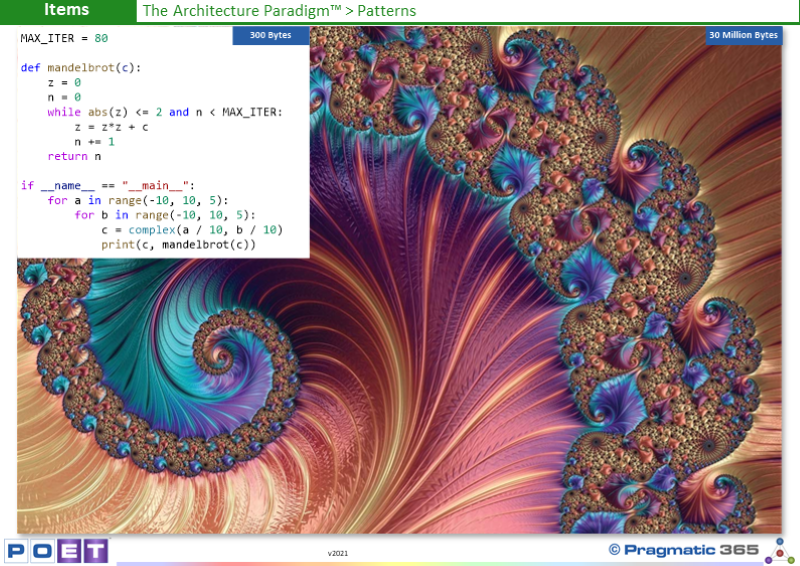
Here we see the Mandelbrot Set. An illustration of one of
the most important and powerful patterns known to man (and nature) - Recursion.
There are two types of patterns:
¨
Firstly we recognise that patterns exist everywhere in just about
everything and especially in nature - a self-optimising system for the
sustainability of living organisms that are Effective (reproduction),
Efficient, Agile and Durable. Hmmm - sounds la bit like an Enterprise! Patterns
promote efficiency and elegance in the structure (Architecture) of things and
how they work. Things that have discernible patterns tend to be much better
than those that do not.
...to read more, please Login or Register